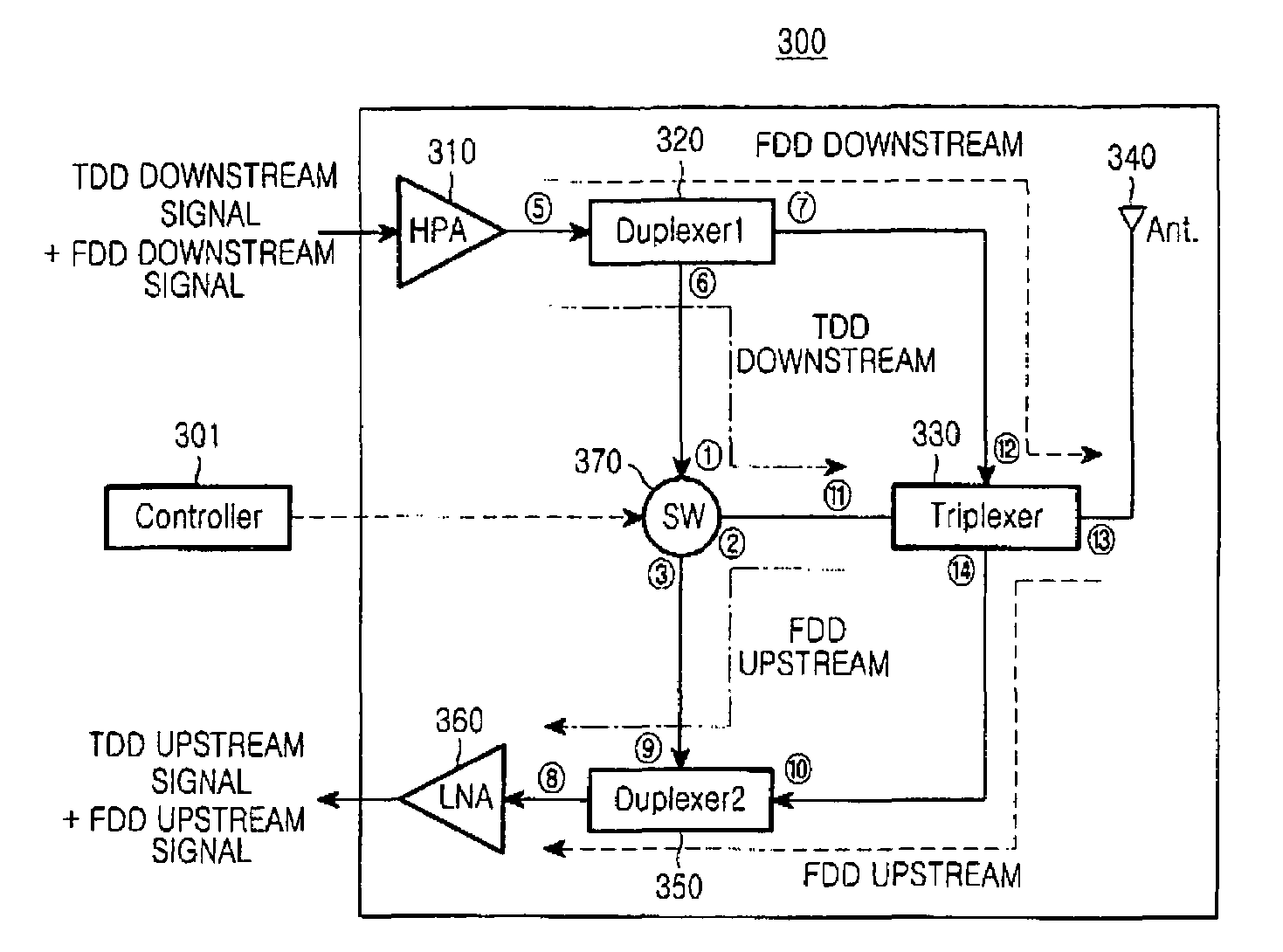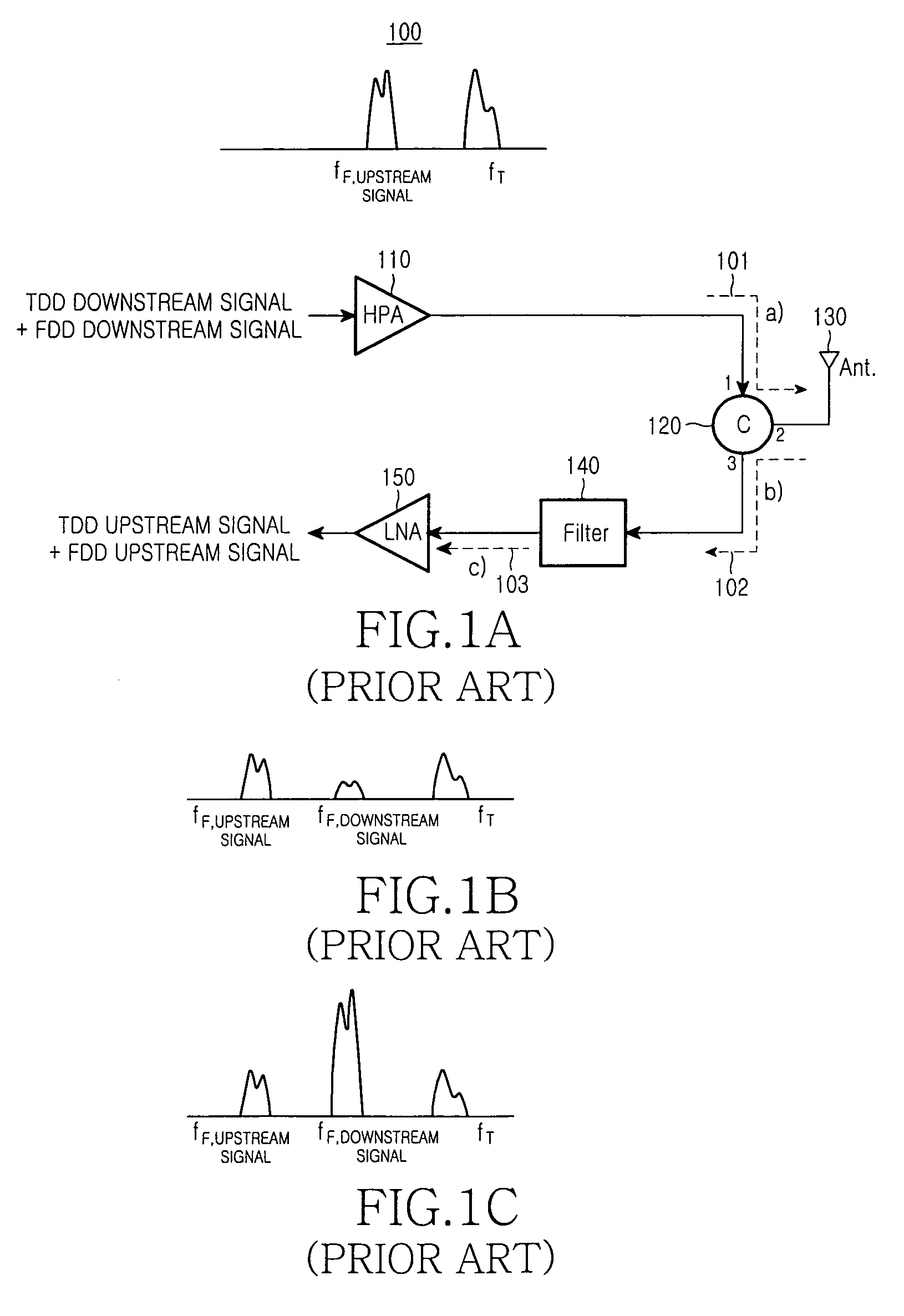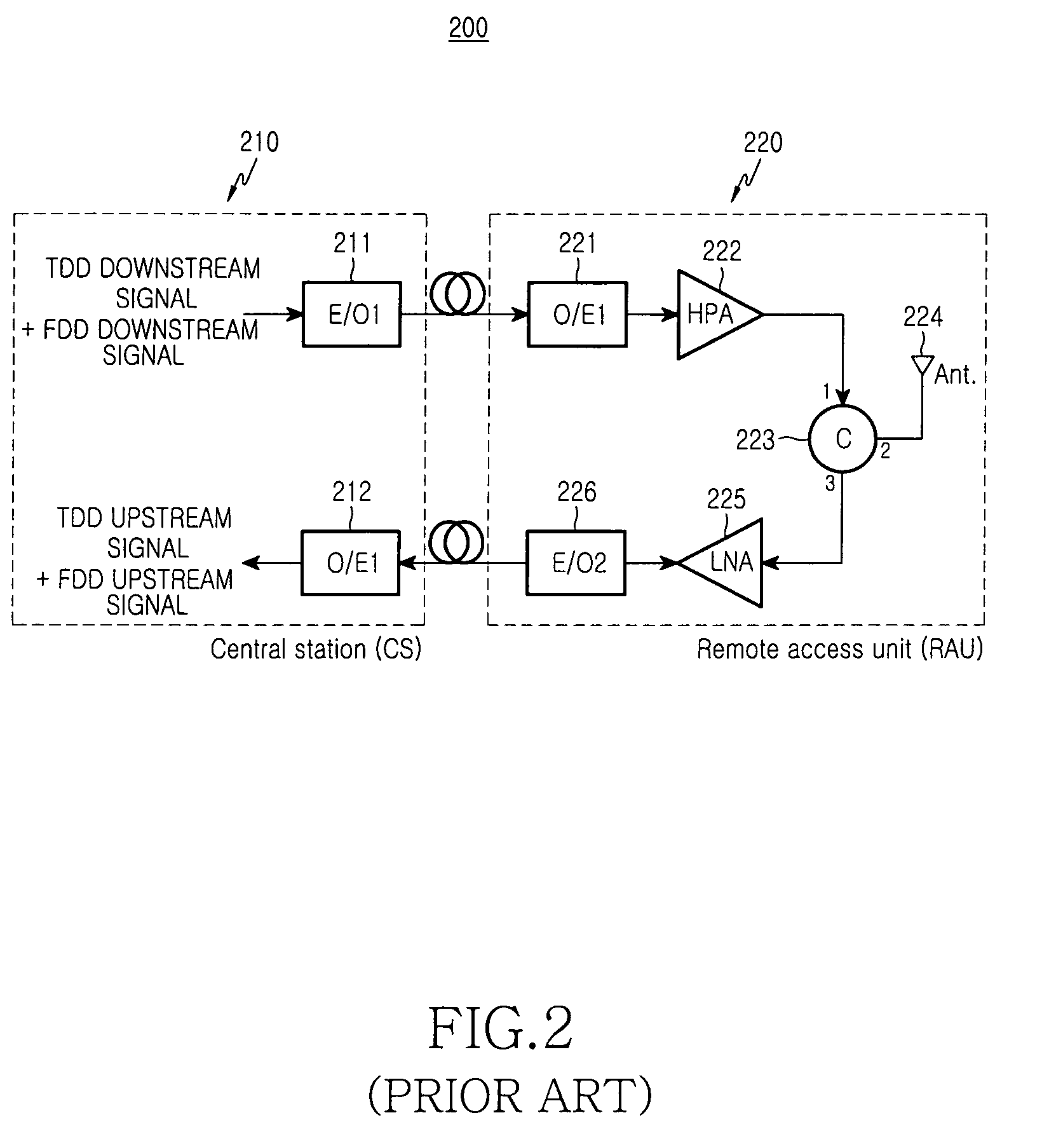Remote access unit and optical network for bidirectional wireless communication using the same
a wireless communication and optical network technology, applied in the field of wireless communication transmission radio frequency, can solve the problems of deterioration of elements for processing upstream signals, inability to separate channels and process them from one another, etc., and achieve the effect of restricting deterioration of elements
- Summary
- Abstract
- Description
- Claims
- Application Information
AI Technical Summary
Benefits of technology
Problems solved by technology
Method used
Image
Examples
first embodiment
[0027]FIG. 3 illustrates a schematic block diagram showing the structure of a remote access unit according to the present invention, and FIGS. 4A through 4C presents graphs illustrating a process of treating data in the remote access unit shown in FIG. 3. Referring to FIG. 3 and FIGS. 4A through 4C, the remote access unit 300 according to this embodiment of the present invention includes first and second duplexer 320 and 350, a triplexer 330, downstream and upstream amplifiers 310 and 360, a switch 370, a controller 301, and an antenna 340. The remote access unit 300 transmits downstream data, in which downstream time division channels and downstream frequency division channels are multiplexed, through the antenna 340 wirelessly, and receives wireless upstream data, in which upstream time division channels and upstream frequency channels are multiplexed.
[0028]The first duplexer 320 divides the downstream data into downstream time division channels and downstream frequency division c...
second embodiment
[0034]FIG. 5 illustrates a schematic block diagram showing the structure of a remote access unit according to the present invention. Referring to FIG. 5, the remote access unit 400 according to this embodiment of the present invention includes first and second duplexers 410 and 460, a triplexer 430, a first downstream amplifier 420, a first upstream amplifiers 450, a second downstream amplifier 490, a second upstream amplifier 470, a switch 480, a controller 401 controlling the switch 480 and an antenna 440 for transmitting downstream data wirelessly and inputting upstream data received wirelessly into the remote access unit 400.
[0035]The first duplexer 410 divides the downstream data into downstream time division channels and downstream frequency division channels, as previously discussed. Then, the first duplexer 410 outputs the downstream time division channels toward the second downstream amplifier 490, while outputting the downstream frequency division channels toward the first...
third embodiment
[0039]FIG. 6 illustrates a schematic block diagram showing the structure of an optical network for bi-directional communication according to the present invention. Referring to FIG. 6, the optical network 500 according to this embodiment of the present invention includes a central station 510, a remote access unit 520, and first and second optical cables 501 and 502 for linking the central station 510 and the remote access unit 520.
[0040]The first optical cable 501 transmits downstream optical signals toward the remote access unit 520, and the second optical cable 502 transmits upstream optical signals toward the central station 510.
[0041]The central station 510 includes an electric-optical converter for electric-optically converting the downstream data into the downstream optical signals and outputting the downstream optical signals to the remote access unit 620, and a photo-electric converter 512 for photo-electrically converting the upstream optical signals inputted from the remo...
PUM
 Login to View More
Login to View More Abstract
Description
Claims
Application Information
 Login to View More
Login to View More - R&D
- Intellectual Property
- Life Sciences
- Materials
- Tech Scout
- Unparalleled Data Quality
- Higher Quality Content
- 60% Fewer Hallucinations
Browse by: Latest US Patents, China's latest patents, Technical Efficacy Thesaurus, Application Domain, Technology Topic, Popular Technical Reports.
© 2025 PatSnap. All rights reserved.Legal|Privacy policy|Modern Slavery Act Transparency Statement|Sitemap|About US| Contact US: help@patsnap.com



